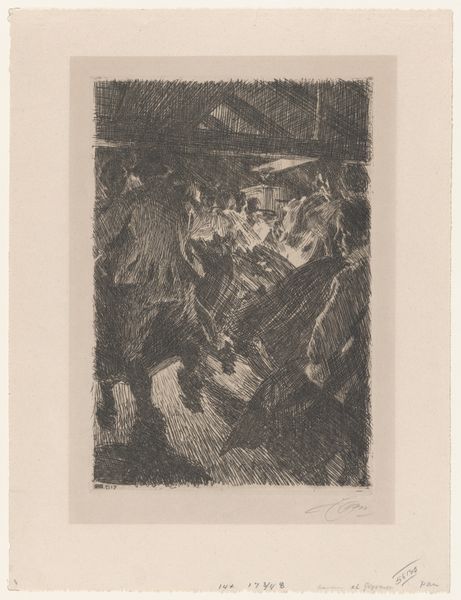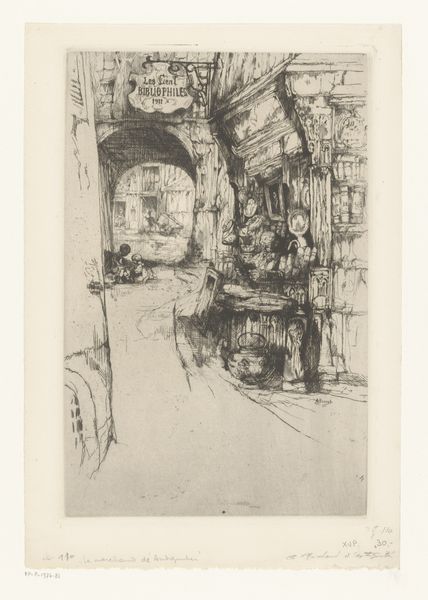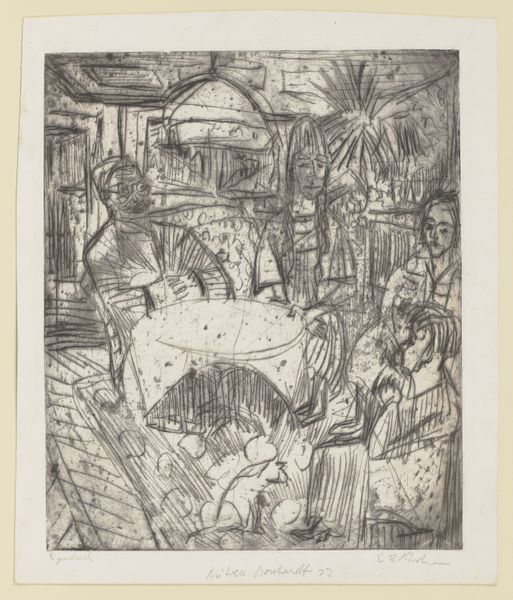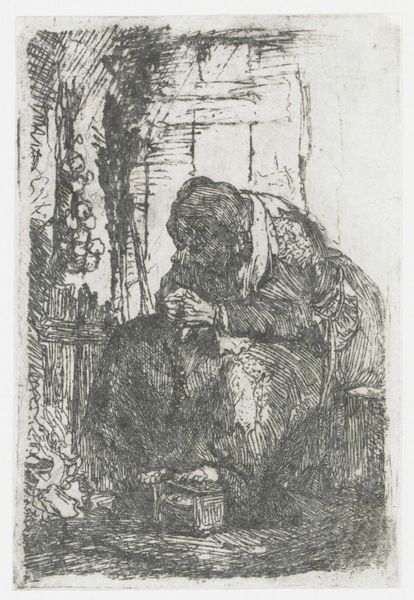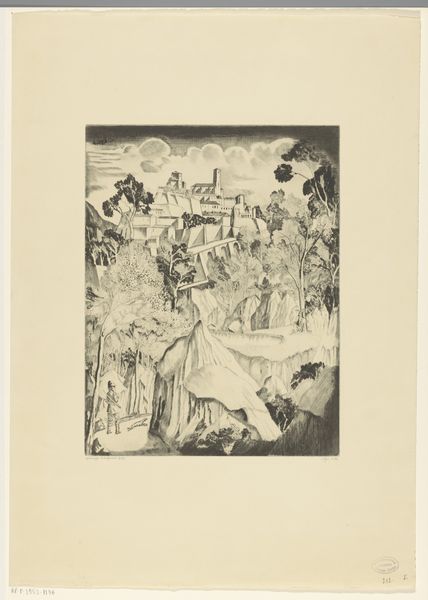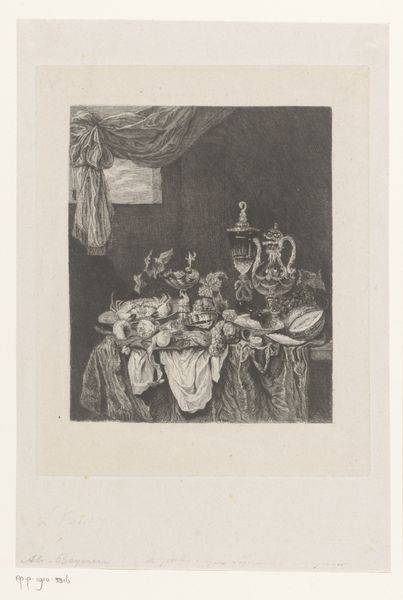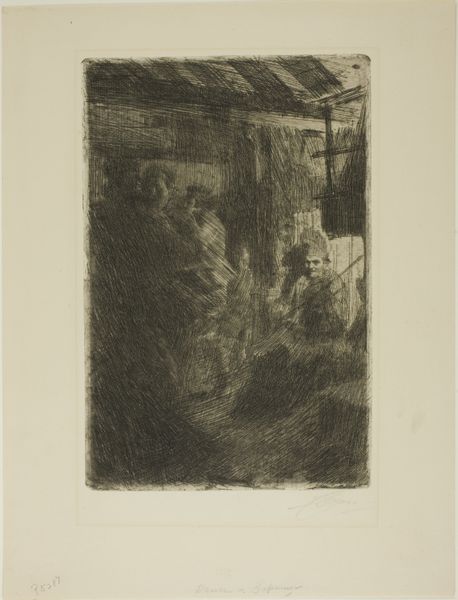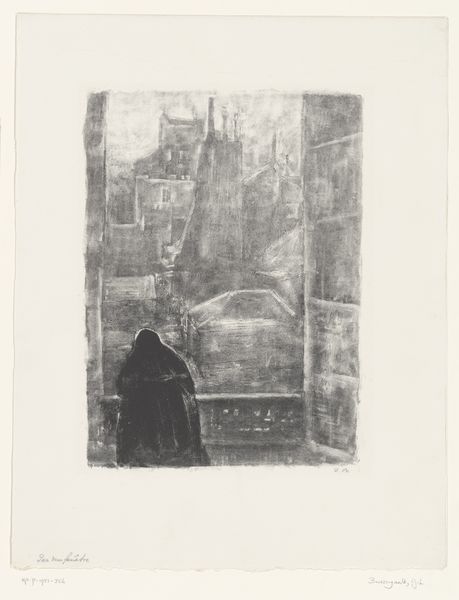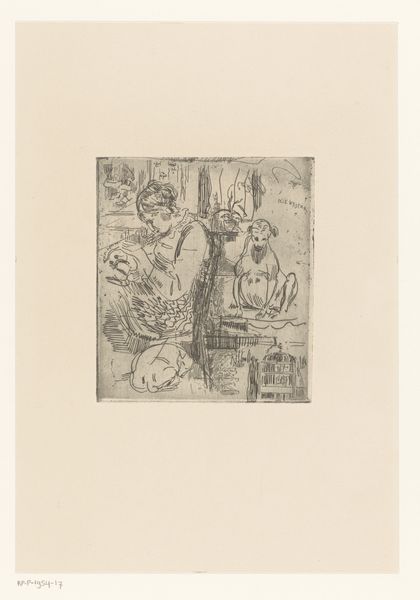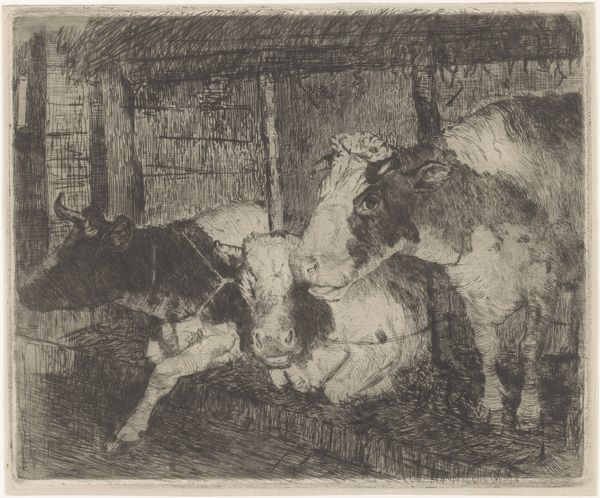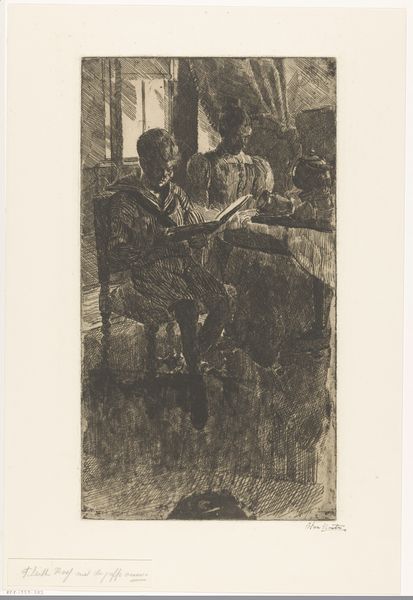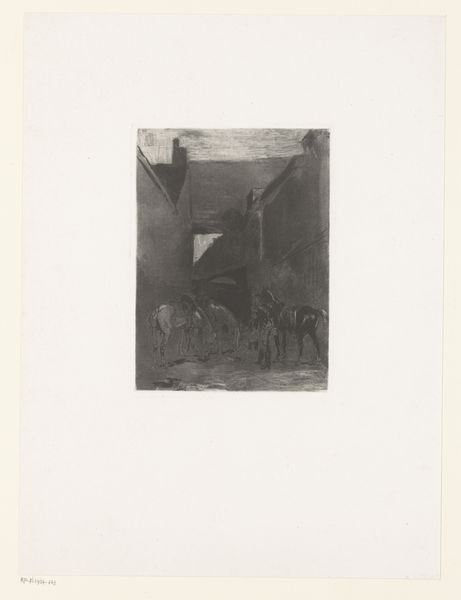
Dimensions: height 238 mm, width 316 mm
Copyright: Rijks Museum: Open Domain
Editor: Here we have Norbert Goeneutte’s “Interior of a Butcher Shop,” created after 1888. It’s an etching, currently held at the Rijksmuseum. The stark black and white and heavy lines give it a really gritty feel. What's your read on this? Curator: It's interesting to consider Goeneutte, known for his portrayals of Parisian life, focusing on such a visceral scene. The depiction of labor, especially within the food industry, was increasingly relevant in late 19th-century Paris, given growing urbanization and concerns about food supply. Think about Zola’s *Le Ventre de Paris*. How do you see this etching fitting into those kinds of anxieties? Editor: I hadn’t thought about it that way. I guess it does reflect the anxieties around food. The sharp lines and dark areas make the butchery seem kind of…bleak. It’s not idealized at all. Curator: Precisely. It’s a deliberate choice, pushing back against idealized views of urban life, maybe critiquing the social realities hidden beneath the surface of the beautiful boulevards that were being constructed at the time. Does the print itself remind you of anyone in that period? Editor: Perhaps Daumier, maybe some Degas. There’s a social commentary angle there, similar themes, and you get a similar feeling of urgency from their images of Parisian daily life. Curator: Exactly! They wanted their audience to react, not just observe. The "realism" of the scene might also represent a new style aimed toward the social structure, the culture, or, more frankly, toward institutions. The print and media revolution had changed a lot and changed society. Editor: That's fascinating, I didn’t see that until now. I will try to think more critically from a social, cultural and historical angle from now on. Thanks for opening my eyes to that. Curator: My pleasure. This piece reflects more than just what meets the eye, or what is right in front of us, the more perspectives and tools you use, the easier is to decipher all layers behind the surface.
Comments
No comments
Be the first to comment and join the conversation on the ultimate creative platform.

